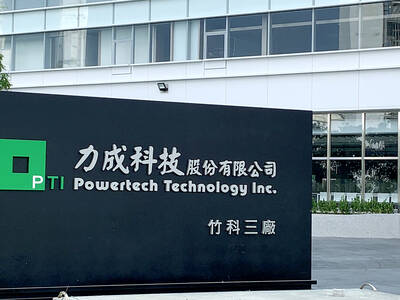Lucrative Australian exports such as iron ore face a tough year as flatlining global growth and sluggish demand are set to topple resource prices from extravagant highs, analysts said.
Recent months have seen signs of stress in the country’s mining boom, which has poured billions of dollars into the national economy over the past decade, with some mines shutting and projects scaled back amid the financial turmoil.
And after seven years of sky-high growth fueled by Asian demand, the price of exports such as iron ore and copper is set to fall markedly as metal values contract, analysts said.
“The luxurious commodity prices, and importantly the volumes, particularly in iron ore and coal ... just aren’t going to be there next year,” said Tim Schroeders, the Melbourne-based portfolio manager at Pengana Capital.
Schroeders said a fall of between 60 percent and 70 percent in most metals last year — combined with slowing growth, large inventories and frozen credit markets — meant that commodities should brace for further price falls this year.
“It’s very difficult to ascertain price outcomes at the moment but we are getting back to very bombed-out levels in a lot of these commodities,” he said.
Schroeders said the impact of falling commodity prices in Australia — where resources excluding gold accounted for the biggest slice of export earnings in 2007, equal to 34 percent of total exports — would be significant.
“And I can’t see another sector of the economy in the short term picking up that slack,” he said.
China’s continued growth was the key positive for the mining industry but even that was unlikely to lift the gloom until the middle of the year, he said.
“And we may well have another half year of malaise before the inventories are worked off, the stimulus packages start to work through the system and people generally feel a bit more confident that the world isn’t ending,” he said.
Soon-to-be-negotiated contract prices for iron ore, a vital ingredient in steelmaking and one of the country’s most valuable exports, will be a key indicator of Asian demand this year, analysts say.
Major miners BHP Billiton and Rio Tinto last year agreed to price hikes of between 80 percent and 97 percent with China’s Baosteel for iron ore contracts, but this year is widely expected to bring an end to years of escalating price rises.
Mark Pervan, head of commodity research at ANZ Bank, said the worst-case scenario would be for iron ore contracts with the major Asian steelmaking companies to drop by 50 percent.
Pervan said while the US has been a major drag on commodity markets, this had in the past been more than offset by strong Chinese growth.
“That’s going to change,” he said. “What you’ve got now is an even weaker global demand story plus you don’t have a strong offset from China, and that’s why you’ve got the prices where they are today. And potentially they could go a little lower if we start to see further cracks in the Chinese growth outlook.”
Resources analyst at DJ Carmichael in Perth, James Wilson, said the most important factor in resource prices would be China, which he said had “turned into a lifeline pretty much” for Australian export commodities.
“A lot will depend on GDP data coming out of China,” he said. “Are they going to be going down to 7 percent GDP growth? Are they going to surprise on the upside?”
Wilson would not go as far as to say Australia’s mining boom was winding down, but he said there would be serious challenges this year.
“I would say it’s probably stalling,” he said. “The downturn in demand wasn’t because of a global souring of sentiment towards metals, it was because the entire US went completely bankrupt overnight.”

The DBS Foundation yesterday announced the launch of two flagship programs, “Silver Motion” and “Happier Caregiver, Healthier Seniors,” in partnership with CCILU Ltd, Hondao Senior Citizens’ Welfare Foundation and the Garden of Hope Foundation to help Taiwan face the challenges of a rapidly aging population. The foundation said it would invest S$4.91 million (US$3.8 million) over three years to foster inclusion and resilience in an aging society. “Aging may bring challenges, but it also brings opportunities. With many Asian markets rapidly becoming super-aged, the DBS Foundation is working with a regional ecosystem of like-minded partners across the private, public and people sectors

BREAKTHROUGH TECH: Powertech expects its fan-out PLP system to become mainstream, saying it can offer three-times greater production throughput Chip packaging service provider Powertech Technology Inc (力成科技) plans to more than double its capital expenditures next year to more than NT$40 billion (US$1.31 billion) as demand for its new panel-level packaging (PLP) technology, primarily used in chips for artificial intelligence (AI) applications, has greatly exceeded what it can supply. A significant portion of the budget, about US$1 billion, would be earmarked for fan-out PLP technology, Powertech told investors yesterday. Its heavy investment in fan-out PLP technology over the past 10 years is expected to bear fruit in 2027 after the technology enters volume production, it said, adding that the tech would

YEAR-END BOOST: The holiday shopping season in the US and Europe, combined with rising demand for AI applications, is expected to drive exports to a new high, the NDC said Taiwan’s business climate monitor improved last month, transitioning from steady growth for the first time in five months, as robust global demand for artificial intelligence (AI) products and new iPhone shipments boosted exports and corporate sales, the National Development Council (NDC) said yesterday. The council uses a five-color system to measure the nation’s economic state, with “green” indicating steady growth, “red” suggesting a boom and “blue” reflecting a recession. “Yellow-red” and “yellow-blue” suggest a transition to a stronger or weaker condition. The total score of the monitor’s composite index rose to 35 points from a revised 31 in August, ending a four-month

RUN IT BACK: A succesful first project working with hyperscalers to design chips encouraged MediaTek to start a second project, aiming to hit stride in 2028 MediaTek Inc (聯發科), the world’s biggest smartphone chip supplier, yesterday said it is engaging a second hyperscaler to help design artificial intelligence (AI) accelerators used in data centers following a similar project expected to generate revenue streams soon. The first AI accelerator project is to bring in US$1 billion revenue next year and several billion US dollars more in 2027, MediaTek chief executive officer Rick Tsai (蔡力行) told a virtual investor conference yesterday. The second AI accelerator project is expected to contribute to revenue beginning in 2028, Tsai said. MediaTek yesterday raised its revenue forecast for the global AI accelerator used